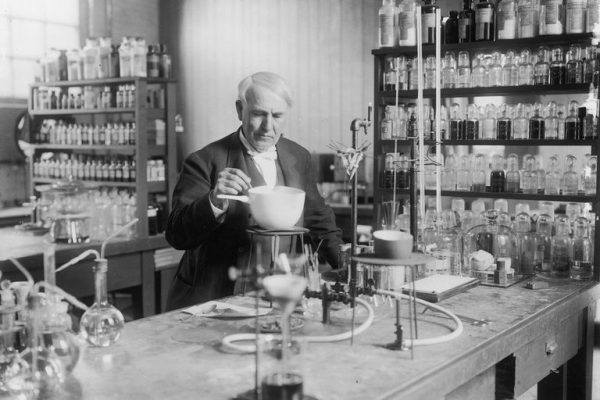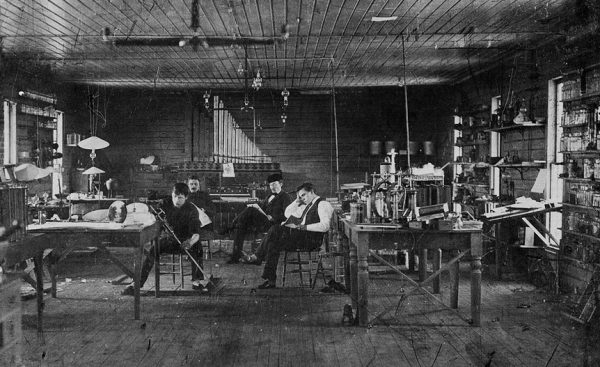28 Jun Article: Thomas Edison and the Electrical Power Cable
The invention of the underground power cable was a ground breaking and innovative creation that birthed our every day lives into a new world of light forever.
Thomas Edison was born on the 11th of February in the year 1847, residing for a short time in Milan, Ohio of the United States of America. For most of his life in education, Thomas was home schooled by his mother, this came as a result of one of Edisons teachers referring to the young boy as “Addled” in his first years of schooling.
“My mother was the making of me. She was so true, so sure of me, and I felt I had someone to live for, someone I must not disappoint.”
At a very early age, Edison always showed interest and fascination in the areas of mechanics and chemical experiments, but by the age of twelve he had lost almost all hearing – it has never been reported why this happened. As Edison got older he dabbled in many different areas of work. In the winter of 1862, Edison took work as a telegraph operator after being rewarded with the relevant training after saving a mans 3-year-old son from a boxcar track. From there and onward, Edison traveled from city to city searching for available jobs within the telegraph industry.
In the year of 1869, Edison took it upon himself to devote all of his time and energy into his inventions and experiments, resigning from his job at the Western Unions Office. That same year, he invented the ‘electric vote recorder’, and received his first patent for the device. This invention was not successful, resulting in Edison heading back to work within the telegraph industry. This time, he tried his luck within mechanical engineering and repairs.
1878 came along and Edison focused on the field of electricity and lighting, leaving his other inventions behind. On October 15 of that year, the Edison Electric Light Co was formed by Edison himself and a group of investors. The goal of the company was to provide financial support for Edisons electrical lighting experiments, manage any resulting patents from his inventions, and work on developing an electric light system that could inevitably light up an entire city. After Edison handed over his patents for the company that year, he received a large share of stock in return.
Edison tried a multitude of different materials before deciding to settle on the use of a strand of carbonised bamboo for a filament. He used carbon paste to adhere this strand to the electric terminals. The filament burns up in an oxygen-rich environment, making it important to eliminate the gas from inside the bulb to prevent the bulb from shattering.
Every attempt and every failure was Edisons self assuring proof that he was one step closer to lighting up the community of Menlo Park in New Jersey. As lamps were installed into the park laboratory, many people ventured to the community to see the newest innovative invention. In 1880, on the day of the Presidential Election, Thomas Edison had insulated, set and prepared his Menlo Park lamp setting which was only to be trialed if James A. Garfield won the election. When the results came through as a win for Garfield, Edison gave the OK to light up his lamps. The row of insulated jute lit up the park, marking the night of Garfield’s Presidential election as a success.
“Edison didn’t just develop a lamp; he invented a whole system of creating and delivering electricity.”
In 1882, Edison shifted his knowledge to the state of New York. To prove that his invention could successfully work, the first commercial electric lighting system was installed on Pearl Street, along the financial district of Lower Manhattan which was bordering City Hall and two newspaper factories.
Only around four hundred lamps were lit in the beginning of Edisons successful invention being produced, and within a year, over five hundred customers were using up to ten and a half thousand lamps. After his small taste of success with the electrical lamps, Edison formed several of his own companies so that he could start vastly manufacturing and operating the equipment that was needed for the new lighting system. His lighting system was also taken to the Paris Lighting Exposition in 1881, the Crystal Palace in London in 1882, and the coronation of the czar in Moscow. The great exposure of Edisons invention led to the establishment of many companies which expanded across several European countries. There was the Edison Electric Illuminating Company of New York, the Edison Electric Tube Company, the Edison Lamp Works, and the Edison Machine Works.
In todays world, lights are a necessity. We need lights to work, cook, clean, and read. Lights are also used to save the lives of missing people, to search for lost aircraft’s, to create warmth in the winter, to quickly microwave our meals, and to spend time with family and friends during the evenings. There is not a day, or night, that goes by where lights are not in use. Thanks to the mind of Thomas Edison, man has been able to mass produce incredible things with light, accompanying us all in progressing into the future one electrical cable at a time.
References:
The Raab Collection. (n.d.). Thomas Edison First Underground Wire | Raab Collection. [online] Available at: https://www.raabcollection.com/science-autographs/edison-first-underground-wire [Accessed 24 Jun. 2019].
The Library of Congress. (n.d.). Life of Thomas Alva Edison | Biography | Articles and Essays | Inventing Entertainment: The Early Motion Pictures and Sound Recordings of the Edison Companies | Digital Collections | Library of Congress. [online] Available at: https://www.loc.gov/collections/edison-company-motion-pictures-and-sound-recordings/articles-and-essays/biography/life-of-thomas-alva-edison/#N_3_ [Accessed 24 Jun. 2019].
Deziel, C. (2017). How Did Thomas Edison’s Light Bulb Work?. [online] Sciencing.com. Available at: https://sciencing.com/lightbulb-changed-over-years-5631574.html [Accessed 28 Jun. 2019].
Brown, M. (n.d.). Edison Patents Incandescent Lamp – This Day in Tech History. [online] This Day in Tech History. Available at: https://thisdayintechhistory.com/01/27/edison-patents-incandescent-lamp/ [Accessed 28 Jun. 2019].
Oatman-Stanford, H. (2015). Let There Be Light Bulbs: How Incandescents Became the Icons of Innovation | Collectors Weekly. [online] Collectorsweekly.com. Available at: https://www.collectorsweekly.com/articles/let-there-be-light-bulbs/ [Accessed 28 Jun. 2019].









No Comments